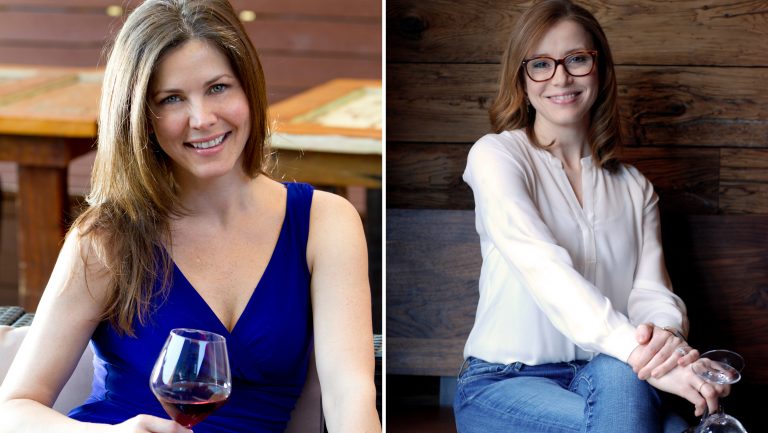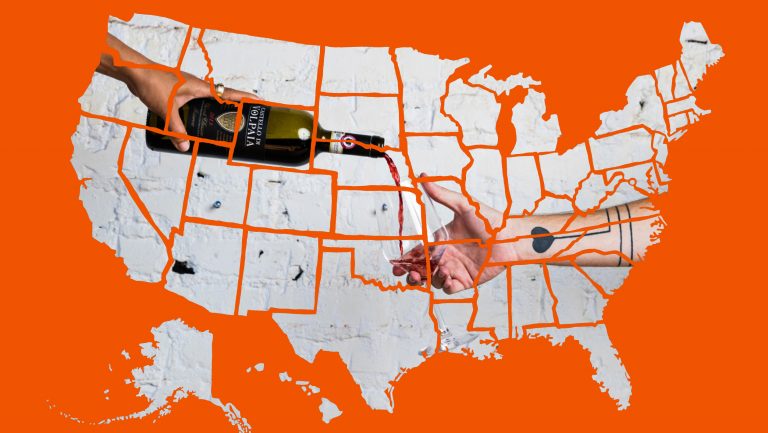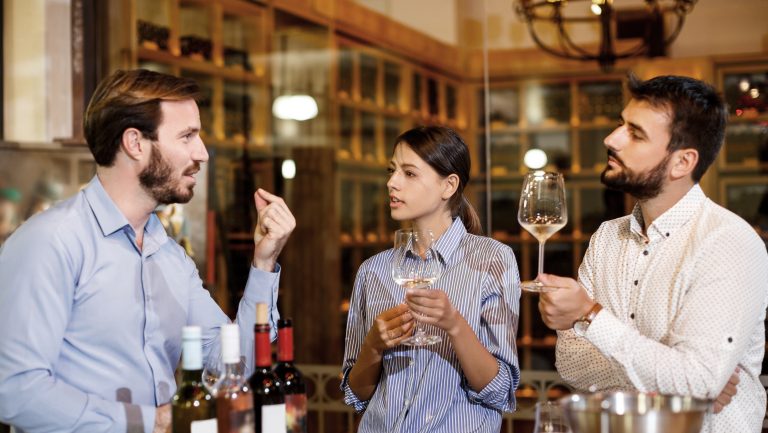If you think maintaining a single wine list is challenging, or that managing lists at different concepts across a city sounds difficult, try doing it for 5, 20, or even 50 restaurants in different jurisdictions, each adhering to strict buying and selling laws. Throw in a couple of control or franchise states with even stricter regulations, and it’s easy to understand how the job of a corporate beverage director can quickly become overwhelming.
Operating an efficient, streamlined wine and spirits program across state lines is incredibly complicated, beverage directors say, not only because liquor laws vary significantly from state to state but because buying products from a single distributor for use in multiple states is illegal. Thus, beverage directors must work with individual suppliers and distributors in each state, complicating their jobs tremendously. “There’s no such thing as a typical day,” says Erik Segelbaum, the corporate wine director at STARR Restaurants in Philadelphia, where he oversees the company’s 34 restaurants across six localities, including New York, Florida, and Washington, D.C. “It’s like asking what’s your favorite wine.”
He and others like him cite the “email mountain” or “tidal wave of emails” that reaches their inboxes daily. But keeping up with the volume of communication isn’t the only thing that’s needed to make their restaurants run smoothly. The number of desirable wines and spirits to choose among for their programs has skyrocketed, too.

Don’t miss the latest drinks industry news and insights. Sign up for our award-winning newsletters and get insider intel, resources, and trends delivered to your inbox every week.
“Fifteen years ago, if someone would have mentioned Grüner Veltliner to me or really even rosé at that point … Albariños, wines from Uruguay, wines from Austria, wines from Corsica … It’s absolutely staggering the amount of wines being imported into the U.S. right now,” says Vonda Freeman, the wine director for The Indigo Road Hospitality & Consultation in Charleston, South Carolina. She’s responsible for the restaurant group’s 16 restaurants located throughout the South, including Tennessee and Georgia.
How do beverage managers maintain their sanity, especially as restaurant groups around the country continue to seek out new markets and expand their footprints? Segelbaum says that being hyperorganized is the only way to manage a multistate drinks program. “You receive so many versions of the same information that’s slightly altered for different markets. The same wine might be with five different distributors of different markets at five different prices. So it’s impossible to expect to keep all that straight,” he says.
Here, veterans from STARR Restaurants, Barteca, a Connecticut-based restaurant group, and The Indigo Road share their best tips on how they stay on top of their jobs:
Centralize Your Operations
While it may be illegal to centralize all buying and distribution operations, beverage directors have found ways to consolidate some aspects of the beverage program to help them run more seamlessly. “In the past, I have wanted every list to be pretty unique,” says Freeman. “Now, as we’ve grown to the size we are, sometimes practicality has to take over a little bit … so I’m trying to keep the lists about 80 to 85 percent the same and have a little bit of wiggle room because obviously different markets respond to different products.” Freeman has watched The Indigo Road expand from a single restaurant when she joined the group eight years ago to several concepts, including a high-end steakhouse and Japanese and Italian eateries.
Segelbaum says he likes to operate differently, keeping each of STARR’s locations truly distinctive. “I am the wine director, not the wine dictator,” he says. “I trust my sommeliers and beverage managers to make the right directions for their programs.”
Yet among the dozens of restaurants he oversees, he maintains a national accounts partnership program with suppliers. So rather than tell a restaurant it must carry a wine, he tells it, “‘For this year that we’ve committed to this supplier, you’re going to pour something by the glass from them the whole year. You can change it every week, you can change it every month, you can change it every season, you can not change it at all. It doesn’t matter.’ But that’s as close to a core mandate [as] you get.”
Research New Markets Ahead of Time
At Barteca, which has 29 restaurants divided between two concepts, Barcelona Wine Bar and bartaco, wine and spirits director Gretchen Thomas has her hands full, as the group is currently planning to open 11 new restaurants across the country. Barteca can be found in about a dozen states along the East Coast, including New York, Virginia, and Florida. It also has restaurants as far west as Colorado.
With 150 suppliers for Barcelona Wine Bar’s beverage program alone, which can include up to 400 wines, Thomas says she uses a giant master spreadsheet—she starts contacting each supplier about four months before opening in a new market to find out who might operate in that particular state and which wines are available. The goal, she says, is to open new restaurants with similar lists so that the servers and their trainers, who fly in from other cities, are already familiar with the wines on opening day.
Thomas explains that a new restaurant can often function as an ambassador, opening new markets for Spanish wines. “We’ve got to find them distribution, and I don’t know the distributors because we’re brand-new also,” Thomas says. “It becomes several months of work with a lot of back and forth, a lot of price negotiations, a lot of price discoveries. You go into a market and you’re like ‘Oh, they put a 25 percent tax on alcohol.’”
Especially when going into a new market, understanding that state’s laws and regulations can be challenging. As a first step, beverage managers say it’s useful to work with the lawyers who helped the restaurant secure its liquor licenses. Suppliers and distributors operating in the state can also sometimes help guide the way, but Segelbaum has a word of caution: “My guideline, my metric,” he says, “when dealing with suppliers and distributors is this: If you [can] put it in an email, send it to me, and copy the state regulators and not worry about it, then let’s talk about it. And if you [can’t] do that, then I don’t even want to have the conversation.”
State laws can also substantially affect the prices and availability of products offered to buyers, as Thomas found when Barteca first opened its restaurants in Virginia three years ago. While wine is offered through distributors in the state, liquor is controlled by a state-run entity.
“The availability of options are dim,” Thomas says. “There’s one individual in Richmond who’s in charge of registering new items into the state, so that’s a slow-going process. When we started in Virginia there was no Mezcal, and it was a joke that Mezcal was illegal in Virginia, and it’s not that it had been outlawed, it was just that nobody had gotten around to registering one.” Soon after, several Mezcals were added, but they were not the quality Thomas wanted for her program. “I had to learn to find my peace with it,” she says, “and also get creative inside the challenging territory.”
Thomas started creating cocktails with sherry, vermouth, and port wine, since those ingredients were readily available from wine distributors. Then, to keep costs down on the spirits, which were priced higher due to lack of competition, she began buying magnums, which could keep her price per ounce lower. “I have to make my investors happy because they’re accustomed to a certain profit margin,” Thomas says, “but I care a lot about our guests, and I want to make sure they’re getting great drinks and not overpaying for them.”

Aim to Build Relationships that Last
Relationship building—whether that’s communicating with and coaching staff at each restaurant or establishing strong partnerships with distributors—is what these beverage directors rely on most. “I think my success comes from an understanding that my relationships with our distributors and suppliers are truly partnerships,” Segelbaum says, noting that he takes the long view on distributor relationships instead of thinking of them transactionally. “At the end of the day, because of our respect, we get the respect of ‘Hey, you can have the market exclusive on this,’ or ‘Hey, this highly allocated thing that everybody wants—you get first crack before we even divide the allocations for the market.’ So it ultimately benefits our restaurants.”
Freeman finds that it’s very important to set clear guidelines with her distributors. “I think it’s really important to lay out expectations. I think that’s key in everything,” she says. “I always start out telling my sales reps, ‘Here’s what I can’t do,’ but I always follow up with, ‘Here are the things I can do.’ I think people really appreciate that. They understand you’re dealing with so many states that time management is tough.”
After working in sales herself, Freeman found ways to become more efficient in her interactions with distributors. She mostly works with one primary contact in each market who filters her requests to the sales reps there. This prevents situations where “I’m dealing with five sales reps just from one company, they’re constantly presenting the same wines to me that someone else already has, and everyone is just spinning their wheels.”
Along with developing solid distributor and supplier relationships, Thomas also recommends connecting with people in similar beverage director positions who may be navigating similar issues. “Make as many friends out there that you can [who] are also doing these kinds of jobs,” she says, “because the truth is, there’s no handbook on how to be a beverage director for a restaurant group … The truth is, there are so many nuances—and it’s nice to talk to others who have the same challenges because you get to share ideas.”

Dispatch
Sign up for our award-winning newsletter
Don’t miss the latest drinks industry news and insights—delivered to your inbox every week.
Alicia Cypress is following her passion for wine after spending more than 20 years as a journalist at National Public Radio and the Washington Post. She’s currently a managing editor at Reviewed.com, a part of the USA Today Network, and she writes a wine blog, itswinebyme.com. She’s received the WSET 2 certification (with distinction) and hopes to continue her studies. Talk about wine with her on Twitter or Instagram.







